Located in the hilly southwest section of Birmingham, Harborne is a Colt course with many admirable holes. The original plan of the redesigned course was first submitted by the then firm of Colt, Mackenzie and Alison in 1922. The club also invited Fowler and Simpson to submit a plan. However, Colt was not in the business of entering competitions and promptly withdrew his design. After the club determined the Fowler plan was unplayable they coaxed Colt to carry on with the job. While some corridors of the old course were used and the 12th green retained, there can be little doubt that Harborne is vintage Colt. The main features of the course are the variety of ways the hills are used and the green complexes. Many holes play at hills on the slight askew and some attack the slopes directly. While many of the approaches may be downhill, the greens themselves are almost without exception placed on the high ground of the nearby area.
Nearly all of the greens complexes are characterized by rather ambitious shaping. Colt seemed to choose a good natural site then mould it into the green complex he desired. Franks Harris Bros. did the work and not surprisingly this bold shaping looks similar to other Colt designs such as Oxford GC. Several greens feature alarming contour and on occassion one can be in a position where stopping the putt near the hole is impossible. From this perspective, it takes a few rounds to figure out where the low sides of the greens are. It is also beneficial to pay particular attention to the valleys to help with reading the greens.
While far more forested than the original Colt plan, the trees at Harborne rarely block angles of play and instead, present aesthetic/sightline issues. The property is quite tight and on probably less than 100 acres so it isn't surprising trees were introduced as a form of safety, but there are instances where trees blocking vistas of forward bunkering belies common sense. It all adds up to a course which feels as though there is more space than is actually the case and plays much longer and is more difficult than the listed daily tee 6000 yards.
The opening hole is a quite appealing hard dogleg right around attractively severe bunkering. There are trees which compromise the look, but not the playing characteristics of the hole. With the unsightly housing in the background it is immediately clear that Harborne is in a bit of a concrete jungle.
Because of the property size with a road splitting the land, the tee for #2 is an awkward walk back between the 1st and 8th holes. However, the walk is well rewarded. The down n' up hole flow is bisected by a stream. The photo below offers a clear indication of the radical green shaping. One can easily imagine how exaggerated these green complexes would have looked before tree planting.
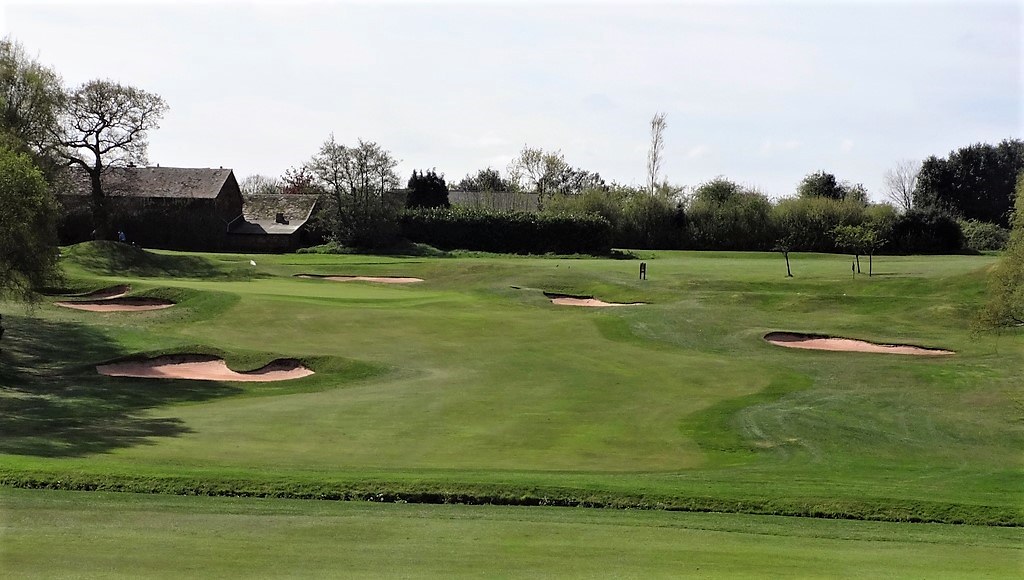
Behind the 2nd the reader gets a better idea of the slopes.

The 3rd is a good little hole. The green surface is larger than it would seem from the tee.

#4 is the first of a disappointing set of par 5s, but there is still a sting in its tail as the seemingly benign green slopes ferociously from back left to front right. The 5th brings us back to the ever present creek where there is a real decision to be made. Can it be carried and if so, to what benefit? The green has loads of interest with a wee hump near the rear making it imperative to keep the approach below the hole. Take care to look at the unusual shaping work to the right of the green. I can only surmise that Colt was trying to protect the green from play coming down the 8th.
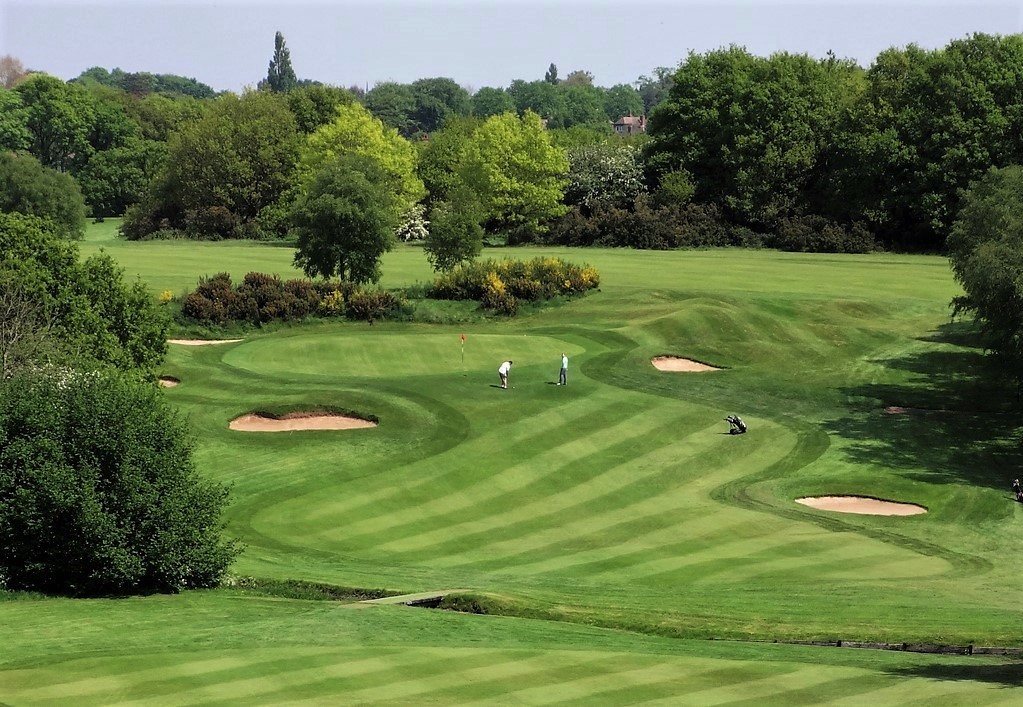
This photo from just short of the water shows the uphill nature of the approach. The hole is located on a back shelf which is very difficult to access.
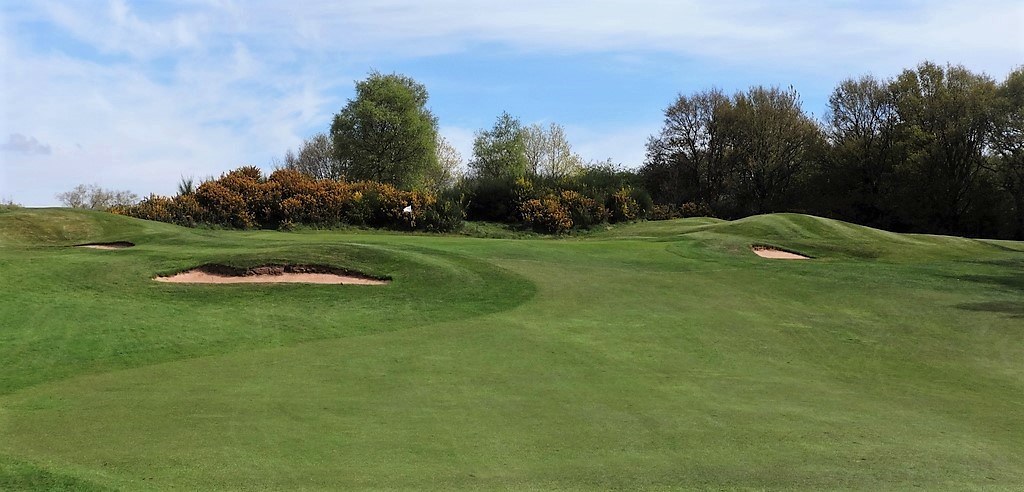
The par 3 6th is a lovely hole with a deceptively wicked green flowing from right to left. I also note that the bunkering of this hole is more closely associated with Whittington Heath - a lovely Colt gem a bit further north. Among several filled in bunkers, there is a curious one positioned just beyond the creek.
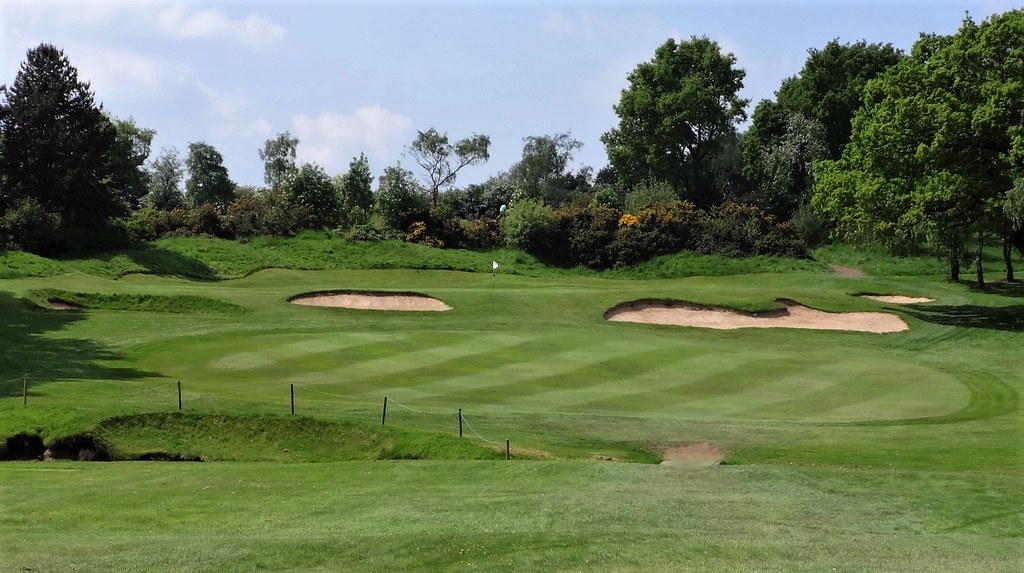
#7 is one of Harborne's sidehill holes. Colt used the land very well in creating all sorts of different angles for the hills. The proximity of Edgbaston and the city centre is evident by Birmingam University's Old Joe in the background. The right half of the fairway corridor is rough. I think the hole originally played more as a choice of dogleg left or right. Rough and trees now cover what would have been fairway right. The 4th is just to the right and it makes sense that the fairway was dropped to a lower section thus creating a dogleg right.
Its only a short iron approach, but playing off a hook lie to a green which can comfortably allow for tucked pins...lets just say there is a reason this 372 yard hole is Harborne's #1 stoke index.
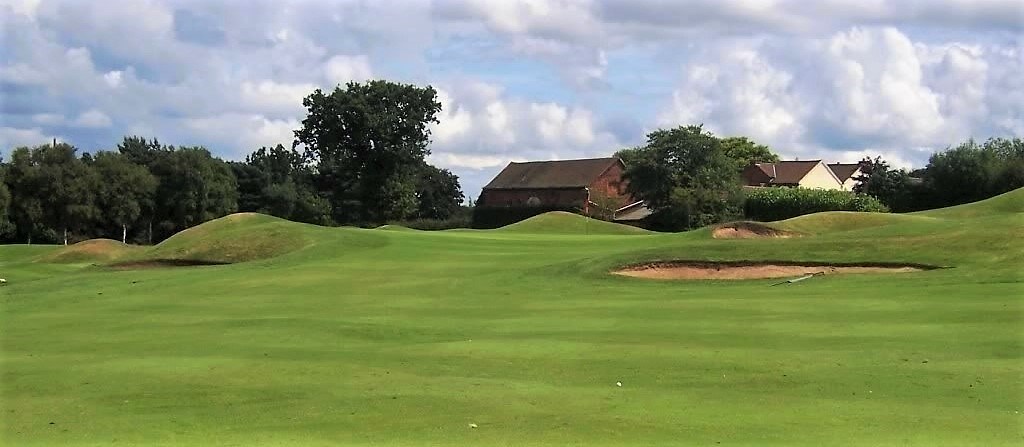
An old photo demonstrates how the bunkers have been nuetered. The second hole is to the left.
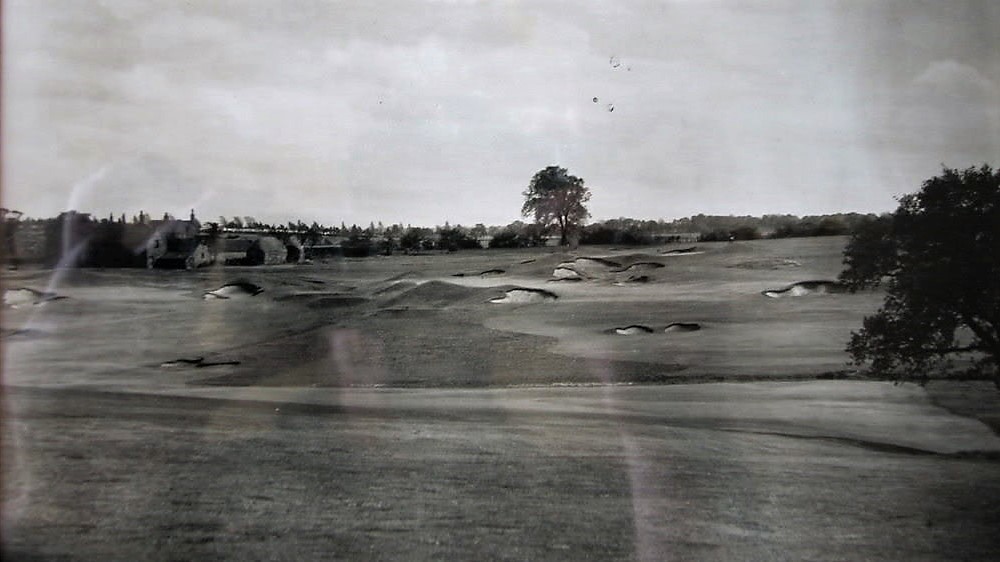
It was mentoned earlier that the 8th plays toward the 5th green. Like at Camberley Heath, Colt fed the 5th green into a ridge and then routed the 8th hole over the high side - great use of the land. Of course, now there is a plethora of trees and rough as a protection layer for the 5th green. The bunkering for #8 is well placed as the photo doesn't accurately reflect the right to left slope of the fairway.
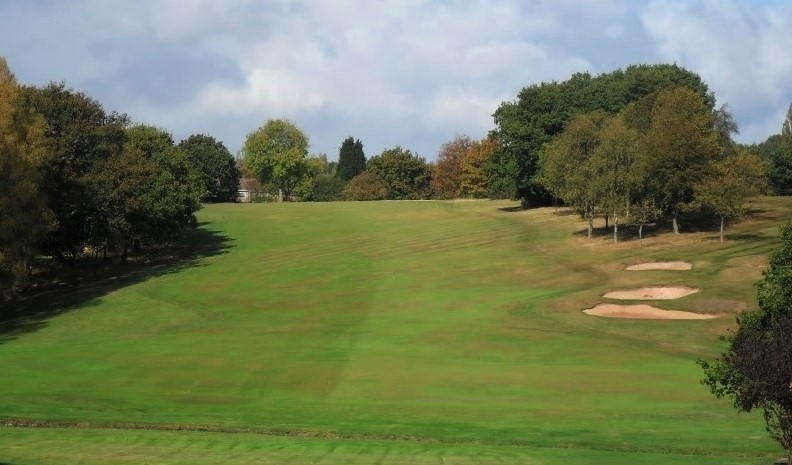
This par 5 is tough to reach in two because of the raised nature of the green and the degree of dogleg. Nearly all the greens at Harborne are either raised and/or on naturally higher ground.
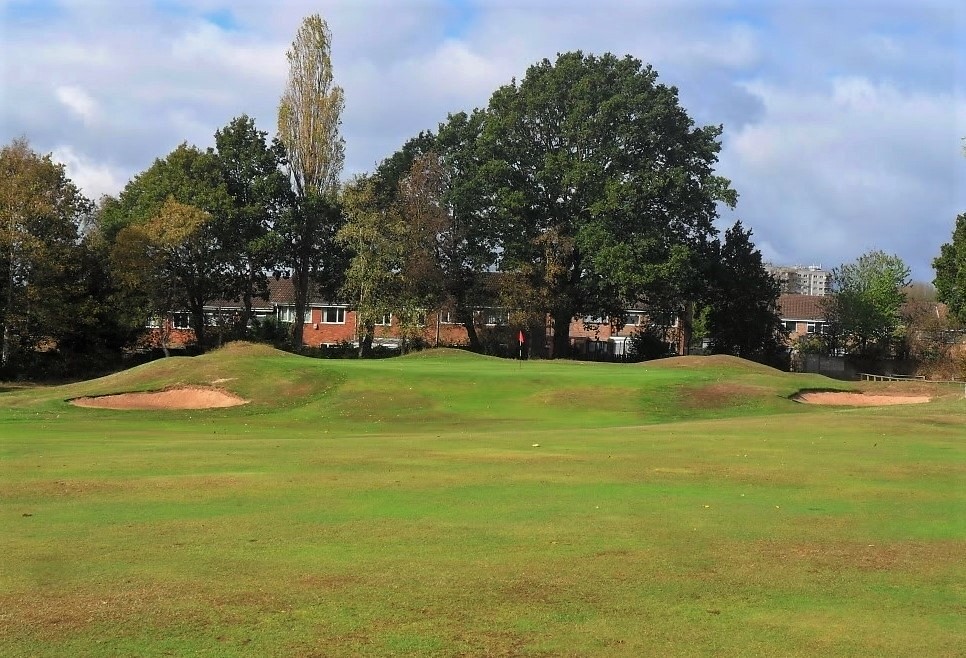
#9 takes us back to the house with another side-hiller. The back nine begins with a very good reachable par 4 that looks much longer. Often times the trees are not a serious issue, but here the aesthetics of the design are compromised by tree plantings. We face a decision with the creek once again on the 11th. Unlike the 5th, there is a real advantage to carrying the hazard as it can make a big difference to the length of the approach. This hole is also clever in that it feels more constrained than the other holes because of housing, but the fairway is very wide. The green is very tricky putting from back to front. Like on many Ross holes, it pays to keep the ball between yourself and the hole when approaching.
We now cross a wee lane to another section of the course for the next five holes. When this sort of scenario presents itself one is never sure if a secret garden (such as at Worplesdon) or a septic tank will be discovered. Well, in Harborne's case its a bit of a mixed bag. I used to dislike the 12th, but I think it is wearing on me. Without question it is a tough hole at 400 yards and a bit uphill, but it does lack a certain charm. The nest of bunkers blocking the fairway are problematic for shorter hitters. The following hole could well be my favourite at Harborne. #13 is a corker which takes us blindly over the brow of a hill with this view to await.
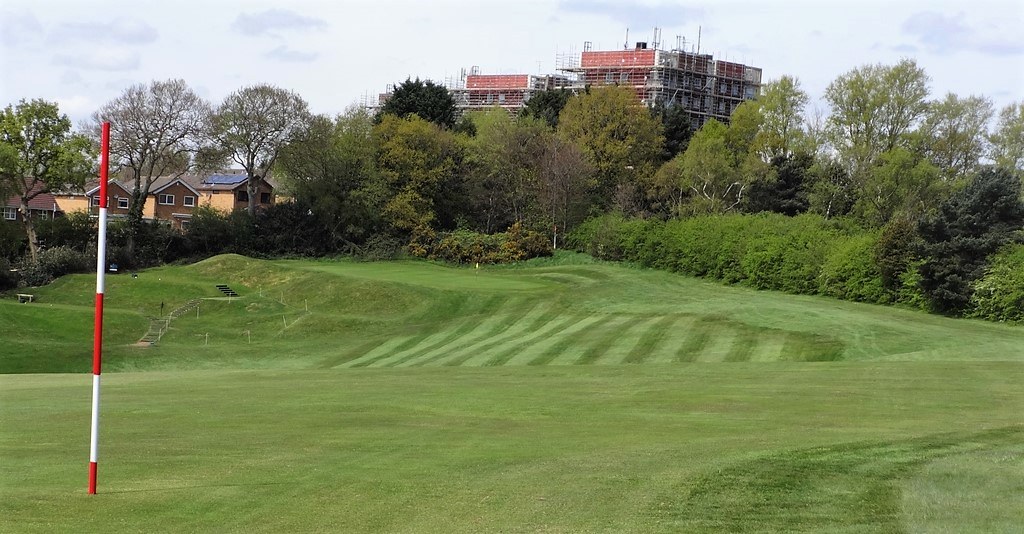
The approach is what I call do or don't die. For sure this is an heroic approach, but coming up short still leaves a recovery. From here the severity of the slope to be carried is more evident.
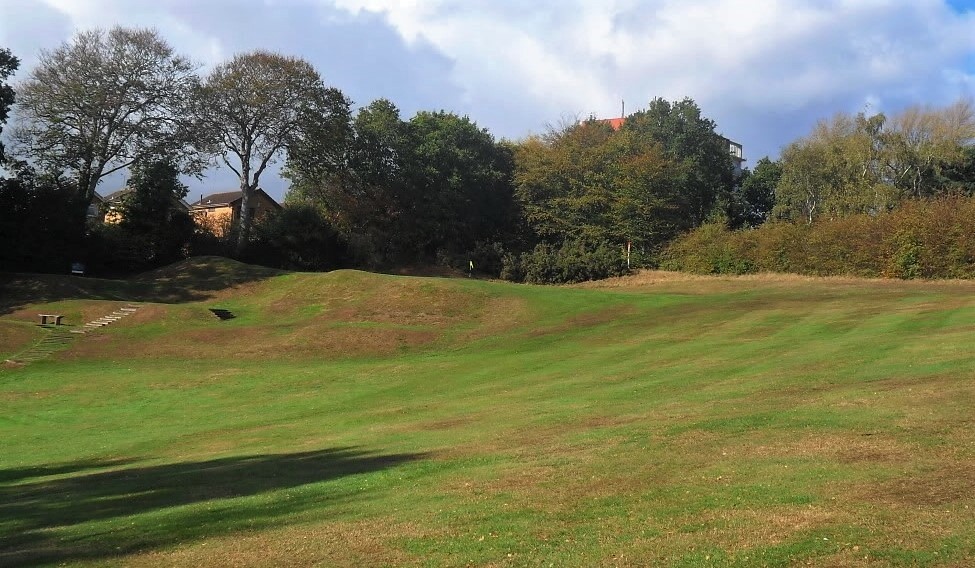
Bigger drivers can risk trees right and earn a better angle of approach. Our very own Mark Rowlinson strides the fairway below.
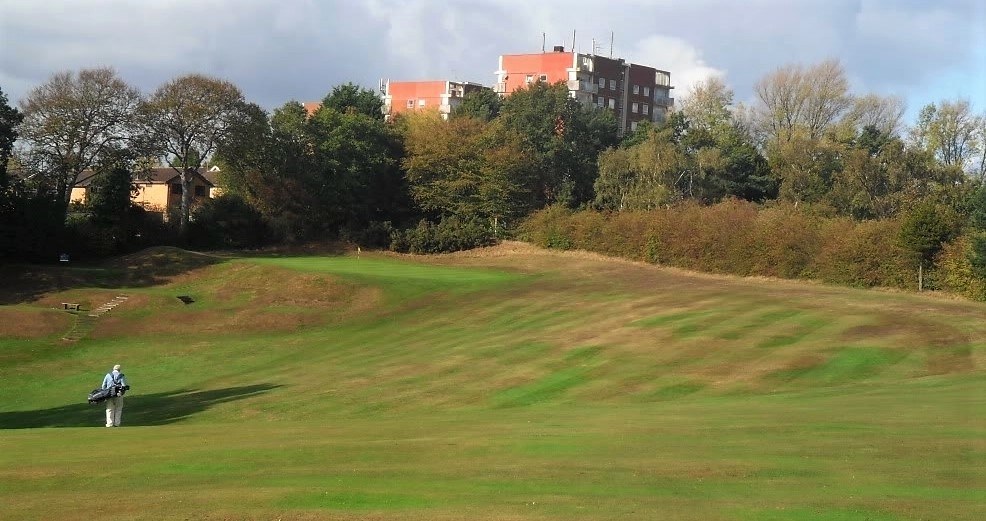
The 14th is a wonderful short hole among what I would call a very worthy and generally quite difficult and long set of par 3s.
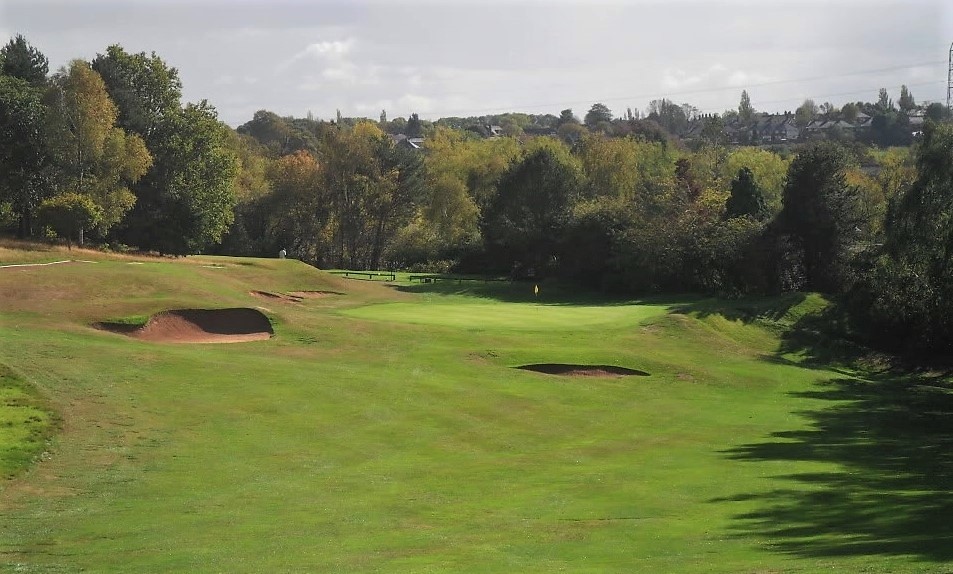
An old photo showing Harborne virtually treeless. The bunkers placed green high today were wisely not orginally present.

Both 15 and 16 are short par 4s of which I think 15 is far more devious due to the run-away nature of the approach. Both holes will pay dividends for those who keep left off the tee. I believe the 15th has been compromised a bit by trees up the left - making it quite difficult to gain the best angle of approach. Approaches to 15 & 16.
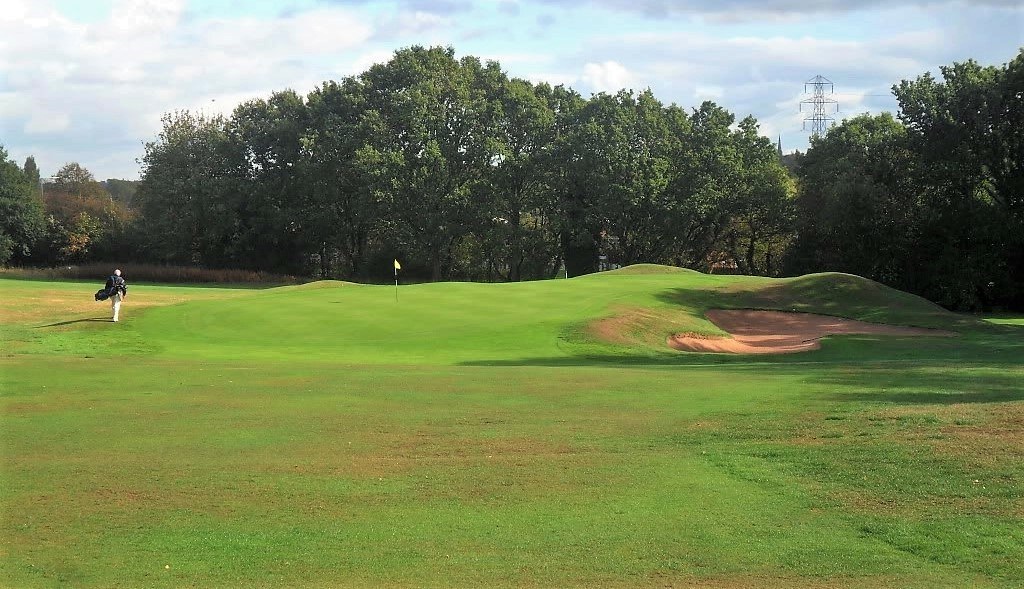
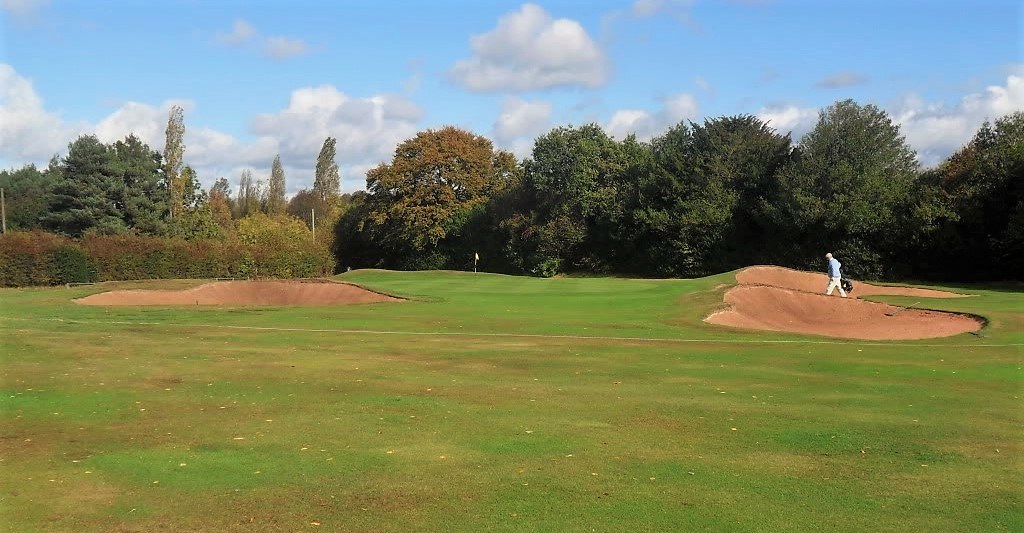
We now recross the country lane for the very good and difficult 17th in which the player drives back over the creek with two well placed bunkers to give pause. The hole then climbs a steep hill for the blind second.
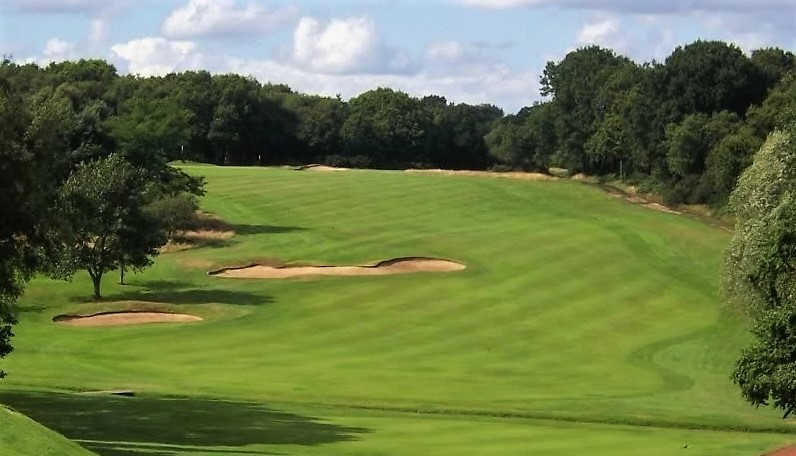
The home hole is a long par 3 which will require a driver for most golfers. Its not my favourite sort of finisher for a match, but a decent hole for that.
In some respects Harborne reminds me of the London heathlands courses such as St Georges Hill. It has that open feeling to it which really lets the player swing away, but it certainly lacks the majesty of Colt's premiere London designs. There are at least half a dozen very good holes and two All England candidates; #s 6 & 13. Yet, I sense something is lacking for me to really place Harborne in the class of really good courses. Thinking on it, it must mainly be due to visuals because Harborne is a very good course indeed.
Other than the drainage issues I would also mention that due to the small acerage of the course, many greens and tees are in very close proximity and so with a large competition on there are too many instances of waiting for others to finish. However, these are relatively minor quibbles. The biggest issue is likely the over-use of crossing hazards. Water runs practically straight across the fairways on 2, 5, 11 and 17. I suspect these ditches are necessary for drainage, but in terms of hitting shots they are less than satisfactory. Regardless, Harborne gets the seal of approval by me and I recommend it for folks already planning to be in Birmingham or not able to secure a tee time at a one of the Midlands more famous courses. No less an expert than Darwin thought "the framework of the course is probably as good as any in the Midlands". 2014
Ciao